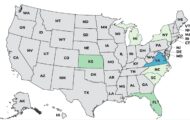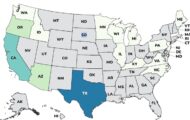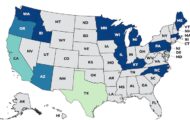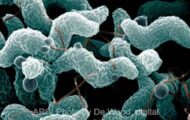Food Poisoning Bulletin talked to attorney Fred Pritzker about the Blue Bell ice cream Listeria monocytogenes outbreak and filing lawsuits. The CDC states that people have been sickened by Blue Bell products as far back as 2010.
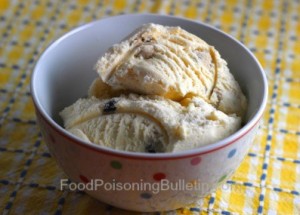 We asked Mr. Pritzker how this is possible. He said, “Many people don’t know that listeriosis is a reportable illness. The Listeria bacteria is genetically fingerprinted using whole genome sequencing or pulsed field-gel electrophoresis in a national laboratory known as ‘PulseNet.’ If no matches to other patients are found, no outbreak is announced. When this current outbreak was revealed, officials searched past records and found genetic matches in PulseNet that added six cases, from 2010 to 2014, to the outbreak total. Some of these patients were diagnosed with listeriosis that long ago, but there was no obvious connection to Blue Bell.”
We asked Mr. Pritzker how this is possible. He said, “Many people don’t know that listeriosis is a reportable illness. The Listeria bacteria is genetically fingerprinted using whole genome sequencing or pulsed field-gel electrophoresis in a national laboratory known as ‘PulseNet.’ If no matches to other patients are found, no outbreak is announced. When this current outbreak was revealed, officials searched past records and found genetic matches in PulseNet that added six cases, from 2010 to 2014, to the outbreak total. Some of these patients were diagnosed with listeriosis that long ago, but there was no obvious connection to Blue Bell.”
We asked if the company has been testing their product for Listeria monocytogenes. Mr. Osterholm said, “Blue Bell has been testing, and tests for Listeria were likely in their HACCP plan, which identifies critical points in production where the product could be contaminated. This outbreak indicates a possible breakdown in the HAACP plan. Blue Bell says they have increased their environmental testing by 800% since the outbreak was uncovered, but it seems they could have been doing more.
“So Blue Bell was doing product testing and environmental testing, but they weren’t holding the ice cream until the results were known. They just released it into the marketplace. They are doing test and hold now. In the past, ice cream wasn’t identified as a vehicle for Listeria, but all ready-to-eat foods are susceptible to this bacteria because it’s so common.”
In environmental testing, companies may find bacteria on a wall or on a food prep surface. That area is cleaned and sanitized, but the only way to truly stop contamination is to look for the source; how the bacteria is getting into the plant in the first place.
Listeria monocytogenes is very hardy. It can grow in cold environments and can survive freezing. In most ready-to-eat foods, there is a “kill step” where the product is heated to temperatures high enough to kill bacteria, including Listeria. If the ice cream was cooked as a custard, contamination had to have occurred after the cooking step, perhaps in churning or packaging.
Once Listeria is established in a facility it can be very hard to eradicate. It thrives in moist and cool areas. For instance, Listeria monocytogenes can thrive in drains in food facilities. Most corporations clean drains by blasting everything out of the drain, but that just aerosolizes bacteria and they can settle on just about every surface.
Blue Bell Ice cream is sold in 23 states in grocery stores and convenience stores. It is also sold to food service accounts, which provide food to hospitals. We don’t know if the product was also sold to schools in those states.
There are at least four different strains of Listeria monocytogenes in this outbreak. The strains found in the two affected plants in Brenham, Texas and Broken Arrow, Oklahoma are different. Patients have been sickened by products made in both of those plants.
Mr. Pritzker believes this outbreak will grow. If anyone has been experiencing the symptoms of listeriosis, which include a high fever, stiff neck, headache, and diarrhea, see your doctor and mention this recall. Listeriosis is a very serious illness and has high hospitalization and death rates.
Pregnant women, especially, need to be careful. If you are pregnant and ate this ice cream, tell your doctor, even if you don’t feel ill. He may want to put you on a prophylactic treatment to prevent the illness. Antibiotics are administered intravenously over the course of several days in that treatment.
The infective dose of Listeria is about 1,000 cells. That sounds like a lot, but a cluster of 1,000 bacteria could easily fit on the head of a pin. Listeria bacteria are only 0.4 micrometers long and 0.2 micrometers wide. Think about a cup of ice cream; it’s very difficult to find that cluster of Listeria in that food when you’re testing product.

